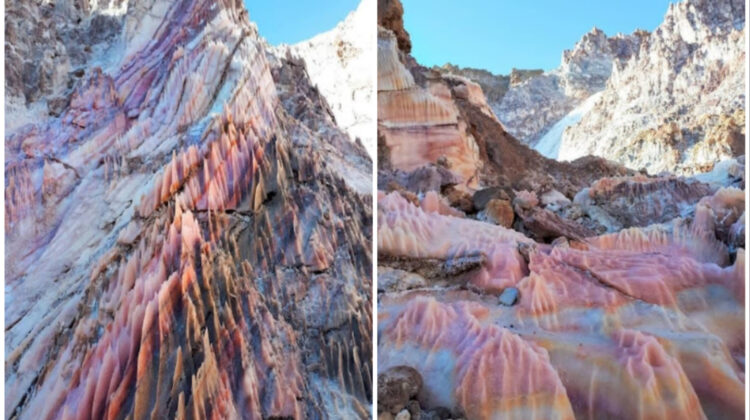
Iran is known for its rich history and culture, but few people are aware of the mesmerising salt rock formations that can be found there. In this article, we will take a closer look at these incredible formations and how they came to be.


Formation of Salt Deposits
Millions of years ago, the Persian Gulf was a much larger body of water than it is today, covering large sections of the Arabian peninsula in the south and Iran in the west. As the water evaporated and the shores of the sea retreated, it left behind vast quantities of salt. The layer of salt became covered with sediments washed down from the mountains by rainwater. Over time, the sediment layer thickened and became compact, weighing heavily on the salt layer underneath.


Salt Tectonics and Formation of Salt Domes
Under such circumstances, salt starts to behave like a fluid leading to an interesting behavior known as salt tectonics. The weight of thousands of feet of sediments and rocks pushing down on the salt layer causes salt to rise up through the overlying rocks. When a weak spot is found in the overlying layer of sediment, the salt will push through it and form domes known as diapirs.


Salt Formations in Iran
All of these incredible salt formations can be seen in the south, southwest, and central areas of Iran. The best examples are found in the Zagros mountains that run parallel to Iran’s coast on the Persian Gulf. The Zagros mountains formed when the Arabian Plate collided with the Eurasian Plate leaving lots of ridges and faults for salt diapirs to form. UNESCO recognizes the Zagros mountains as the only place in the world with such a cumulative of salt domes, which are not yet designated as a World Heritage Site but are being considered for inclusion.

Types of Salt Formations
Aside from salt domes, there are also salt caves, including the longest salt cave in the world at over 6.4 km in the Namakdan Mountain, salt glaciers, salt valleys, karst sinkholes, and salt springs.

Potential Risks
Iran’s salt domes might be at risk from future oil exploration as the impermeable rocks found in salt domes frequently trap petroleum beneath other rock layers. Salt domes in other regions, such as in the United States, Mexico, the North Sea, Germany, and Romania, are already a significant source of petroleum and have been tapped for many years.

Conclusion
Iran’s salt formations are truly a wonder of nature. The salt tectonics that formed these formations offer an incredible insight into the geological processes that have shaped our planet. It is important to preserve these formations for future generations to appreciate and study.

Leave a Reply